18 Beautiful Houseplants That Flower No Matter the Season
Indoor plants that flower year-round can add a touch of lasting beauty to your home. They bring color, fragrance, and a sense of vitality to any space, no matter the season. With the right care, these plants can bloom continuously, providing endless enjoyment. Whether you prefer vibrant reds, soft pastels, or elegant whites, there is a plant to suit every taste. These flowering indoor plants are perfect for brightening up your home or office.
This post may contain affiliate links, which helps keep this content free. Please read our disclosure for more info.
African Violet (Saintpaulia)
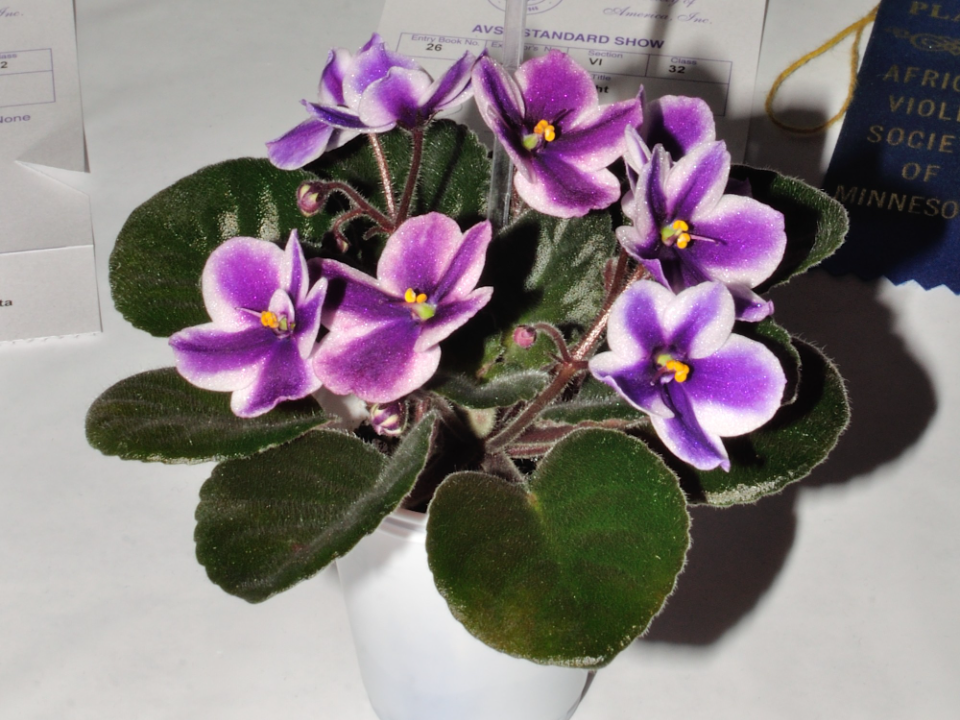
African violets are well-known for their beautiful, vibrant blooms that can last throughout the year. These plants are small, making them perfect for tabletop displays. They bloom in a variety of colors, including purple, pink, white, and blue, bringing cheerful tones into any room. Their compact size makes them ideal for indoor spaces, where they can receive indirect light and moderate humidity.
With proper care, African violets can bloom continuously. Regular watering, using a well-draining potting mix, and providing them with appropriate sunlight will encourage their year-round flowering. These plants thrive in temperatures between 65°F and 75°F, and they are relatively easy to maintain as long as they are not overwatered. Their long-lasting beauty is a testament to their resilience.
Bromeliad (Guzmania)
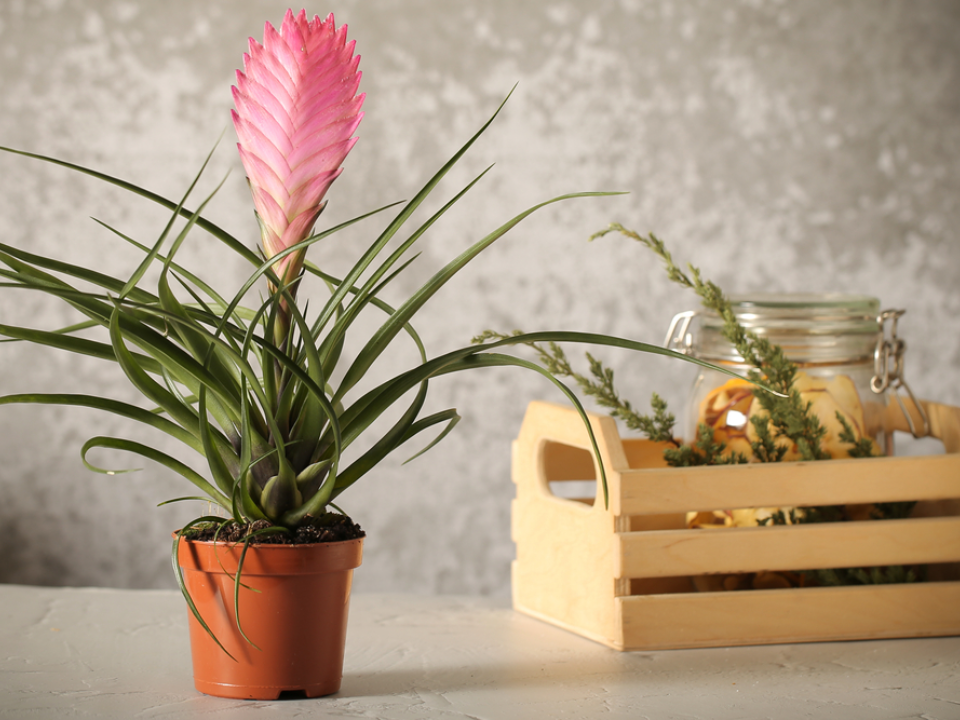
Bromeliads are unique indoor plants known for their stunning, colorful flowers. These plants have a rosette shape and produce bright, tubular flowers that can last for months. Available in red, pink, yellow, and purple hues, they can brighten any indoor space with their long-lasting blooms. Bromeliads are perfect for a decorative touch on bookshelves or countertops.
Bromeliads prefer indirect sunlight and should be watered through their center cup, not the soil, to prevent root rot. They thrive in warm environments, with temperatures between 65°F and 80°F. Once they bloom, the flowers can last up to several months, offering a constant display of color and life in your home. Their easy care and striking appearance make them a wonderful choice for any room.
Anthurium (Flamingo Flower)
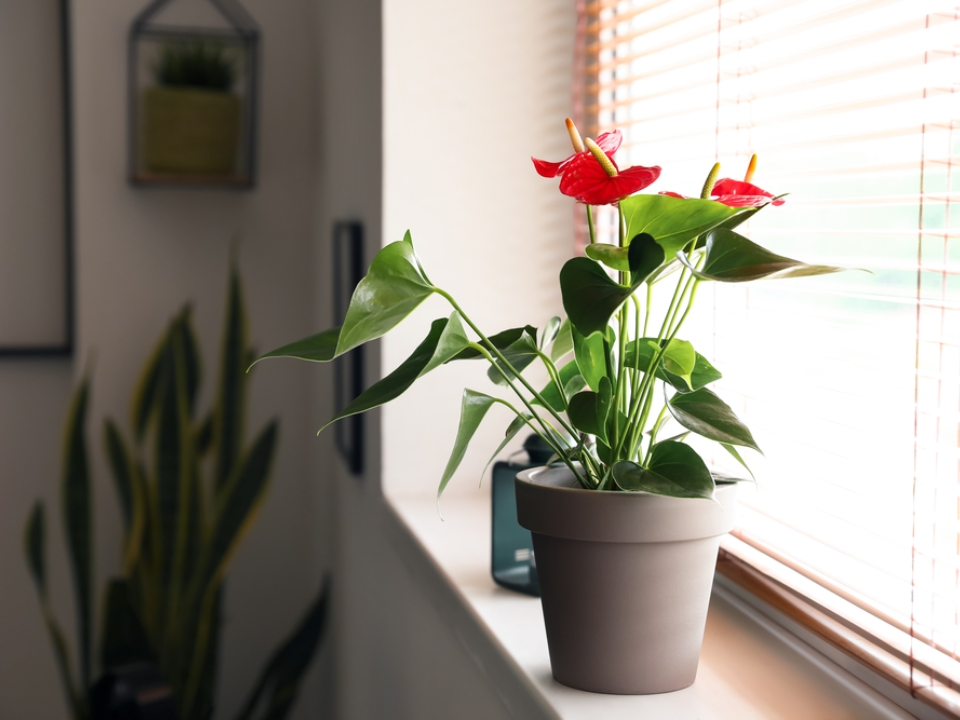
The Anthurium is an exotic plant known for its glossy, heart-shaped leaves and long-lasting flowers. These plants bloom throughout the year, producing red, pink, white, or purple spathes that are often mistaken for petals. The vibrant blooms are complemented by yellow spadices that stand out against the dark green foliage, creating a striking contrast.
Anthuriums prefer bright, indirect light and should be watered when the top inch of soil is dry. These plants thrive in temperatures between 65°F and 80°F, and they enjoy higher humidity levels, making them well-suited for bathrooms or kitchens. With proper care, an Anthurium can flower continuously, offering a consistent burst of color and elegance to your home.
Orchid (Phalaenopsis)
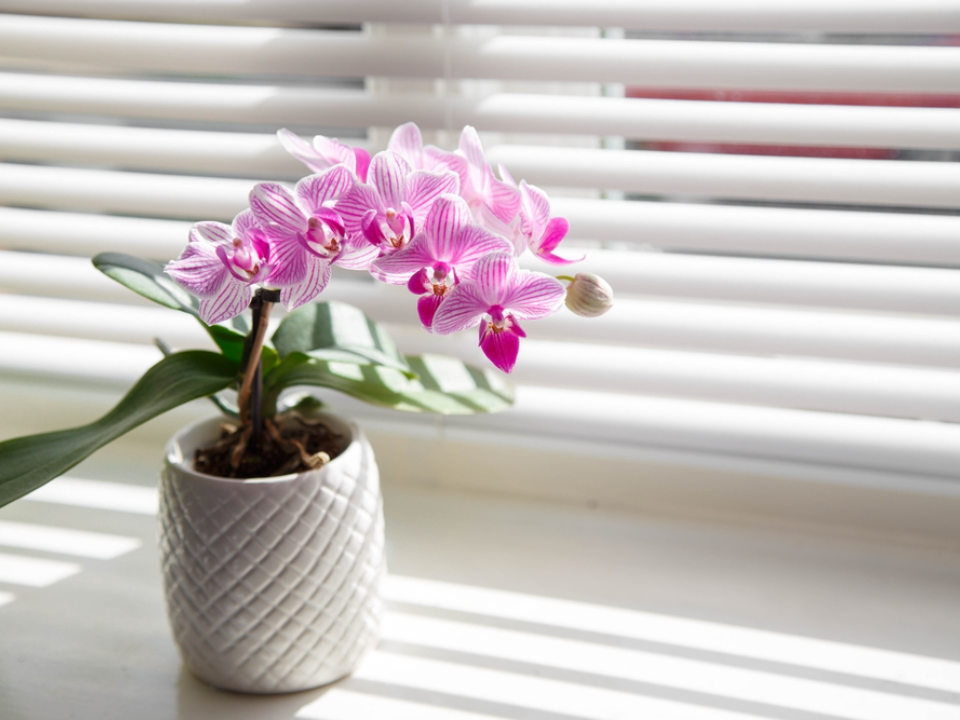
Orchids, particularly Phalaenopsis, are one of the most popular flowering indoor plants. Known for their exquisite, delicate flowers, these plants can bloom multiple times throughout the year. Orchids come in a range of colors, including white, purple, pink, and yellow, and their flowers can last for several months, making them a long-lasting addition to any indoor space.
To ensure continuous blooming, orchids should be placed in bright, indirect light and watered thoroughly when the soil is dry. They thrive in temperatures between 65°F and 75°F, with humidity levels around 50%. Regular feeding with a balanced orchid fertilizer will promote healthy growth and blooming. With the right care, orchids can provide you with elegant flowers year-round.
Hibiscus
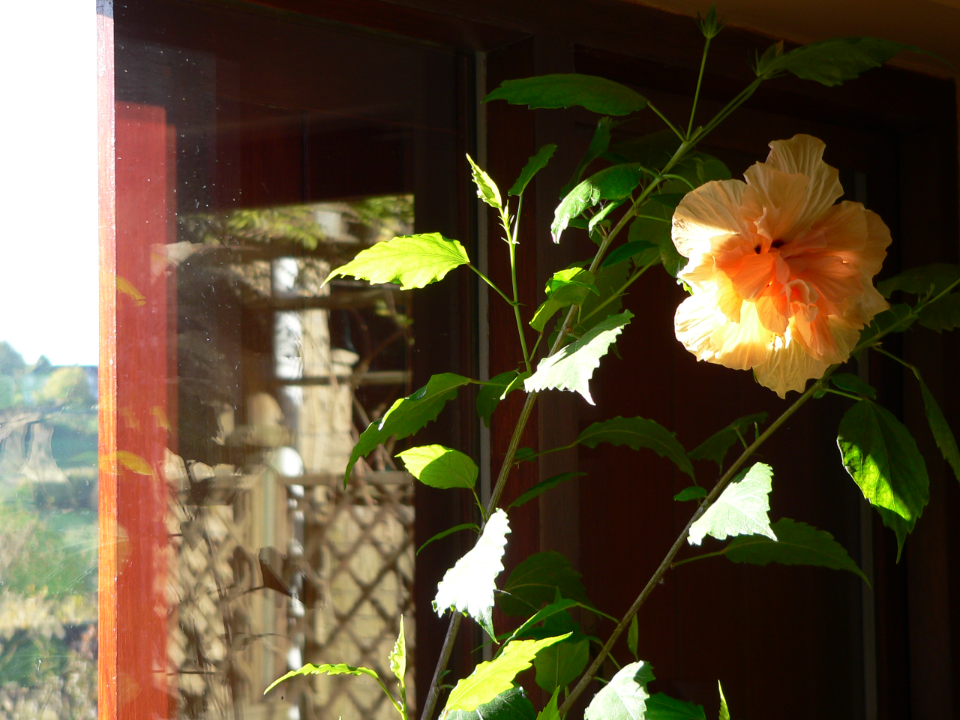
Hibiscus plants are known for their large, showy flowers that bloom in an array of colors, including red, pink, white, and orange. Though typically grown outdoors, hibiscus can also thrive indoors when given the right care. These plants can produce flowers year-round if kept in optimal conditions, providing a touch of tropical beauty to any indoor garden.
Hibiscus plants require plenty of sunlight and should be placed near a south or west-facing window. They also need to be watered consistently, ensuring the soil is kept moist but not waterlogged. Ideal temperatures for hibiscus are between 60°F and 75°F, and they do best in a humid environment. With regular pruning and care, hibiscus will continue to bloom throughout the year.
Jasmine (Jasminum)
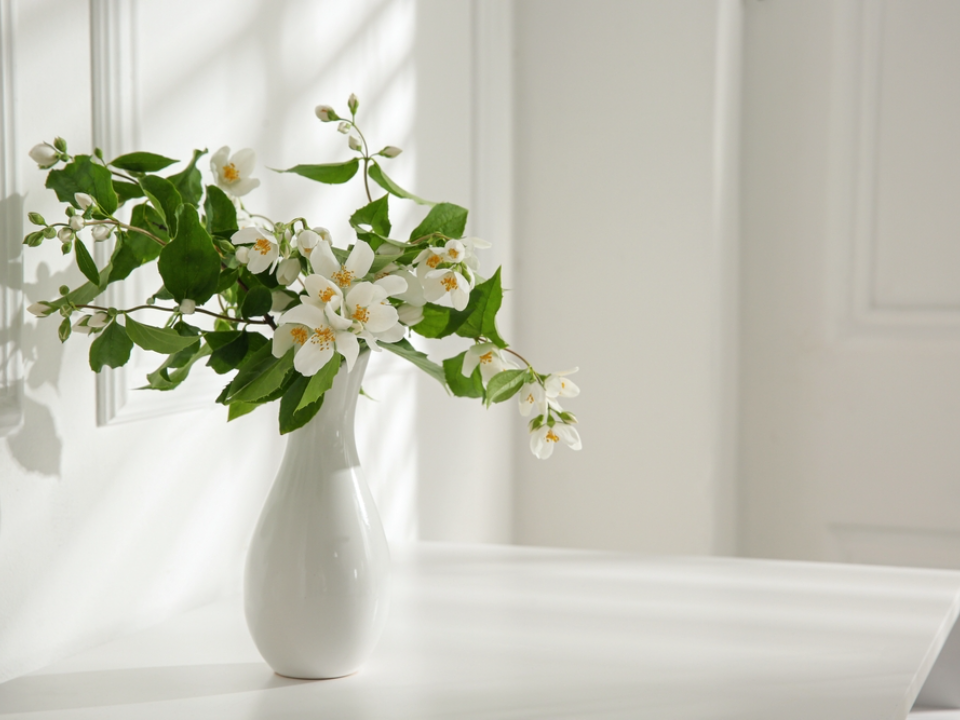
Jasmine plants are known for their fragrant white or yellow flowers that can bloom year-round. These plants can fill your home with a delightful fragrance, making them an ideal choice for bedrooms or living areas. Jasmine is a climbing or trailing plant, making it a great option for hanging baskets or trellises.
Jasmine prefers bright, indirect light and well-draining soil. They should be watered thoroughly when the top layer of soil feels dry, and they benefit from occasional misting to increase humidity. With the right care, jasmine can produce fragrant blooms throughout the year, adding both beauty and scent to your indoor garden.
Begonia (Begonia x semperflorens)
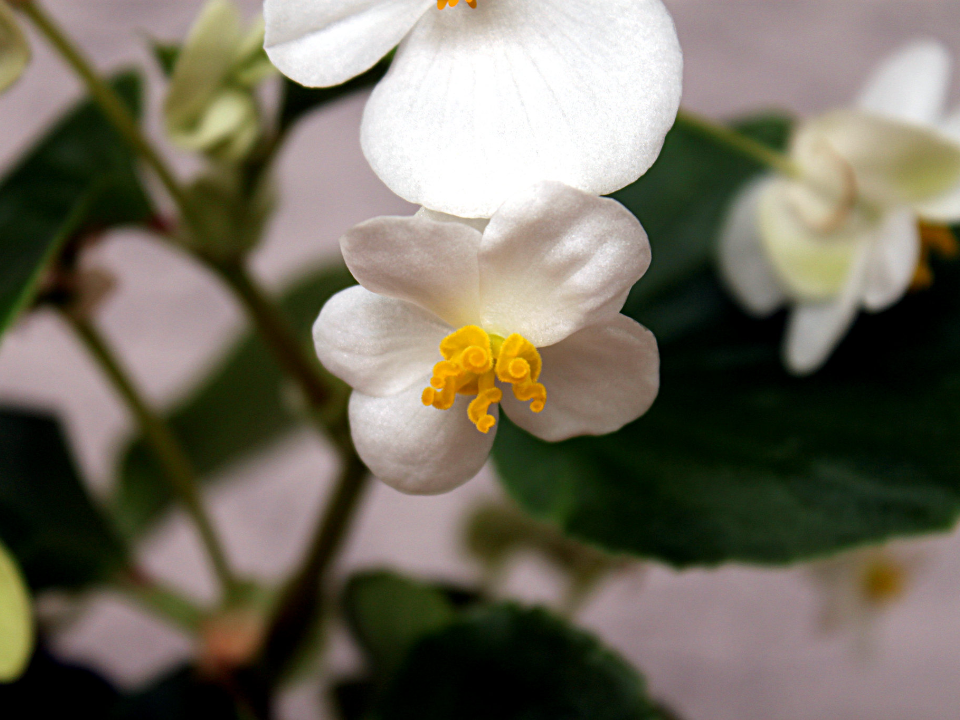
Begonias are versatile plants known for their colorful flowers and attractive foliage. These plants can bloom year-round, producing flowers in shades of red, pink, white, and yellow. Begonias are especially popular for their ability to thrive in both low light and higher humidity, making them perfect for indoor environments like kitchens or bathrooms.
To maintain year-round blooms, begonias need to be placed in a location with indirect sunlight and watered regularly to keep the soil moist. They also benefit from occasional fertilizing to encourage blooming. With proper care, begonias can provide an ever-changing display of colorful flowers in any home, lasting through all seasons.
Kalanchoe
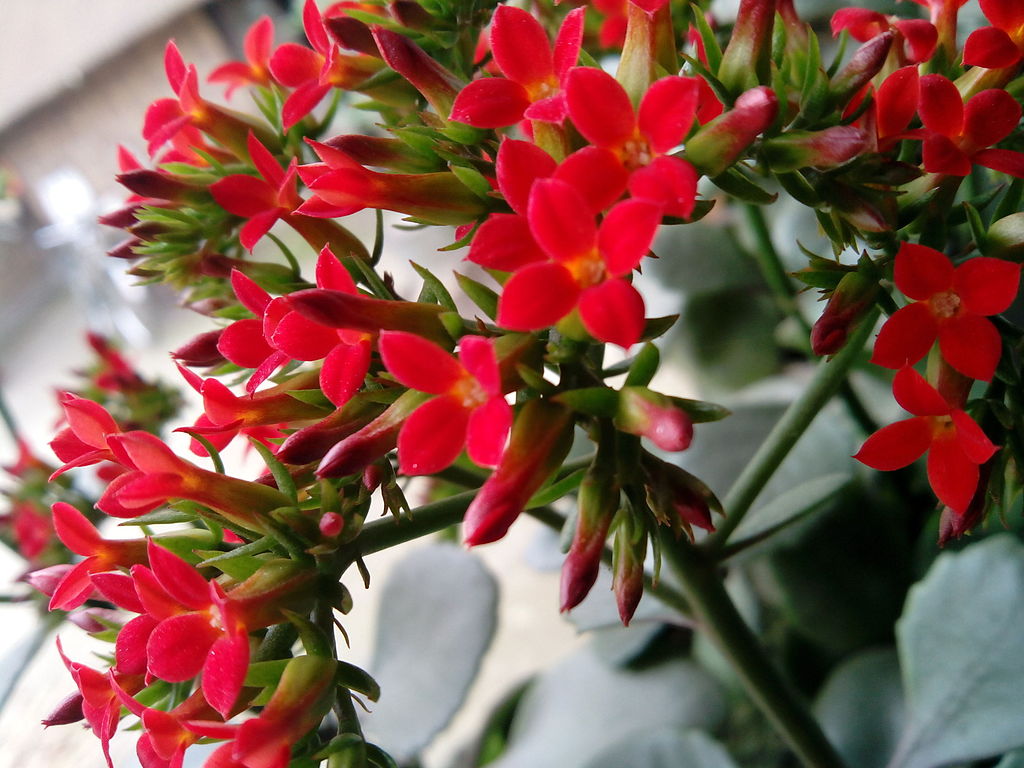
Kalanchoe is a succulent plant that produces vibrant clusters of flowers in colors such as red, pink, yellow, and orange. This plant is well-known for its ability to bloom for extended periods, making it a popular choice for indoor gardens. Kalanchoe is easy to care for and can flower multiple times throughout the year with minimal effort.
Kalanchoe requires bright, indirect light and should be watered only when the soil is dry. These plants prefer warmer temperatures, ranging from 60°F to 85°F, and they can thrive in dry conditions, making them a perfect plant for those who do not have a green thumb. Regular pruning of spent flowers will help encourage further blooms and keep the plant looking tidy.
Crown of Thorns (Euphorbia milii)
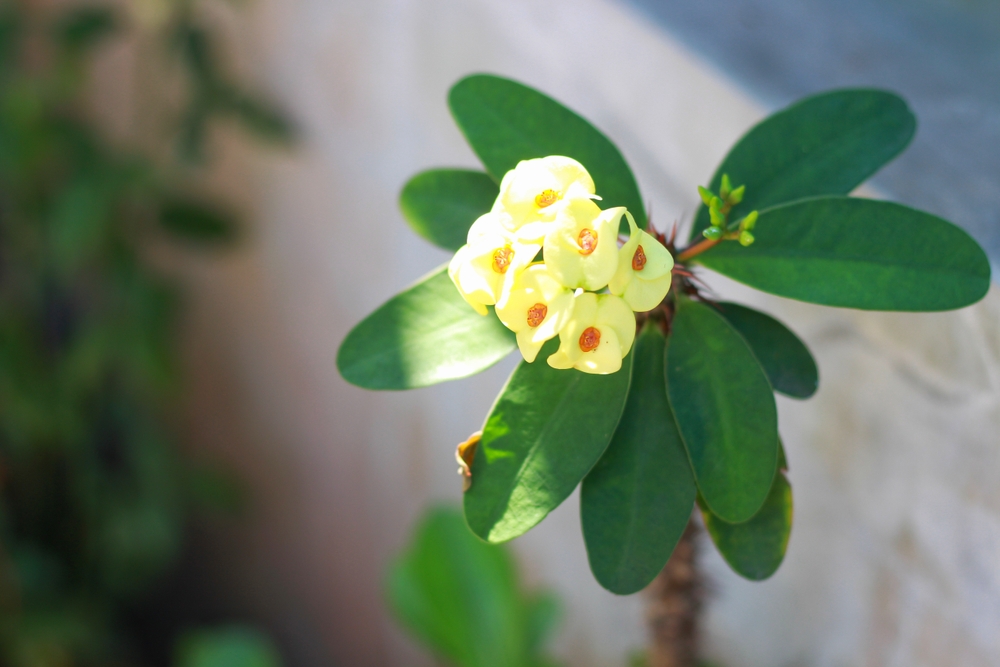
Crown of Thorns is a unique succulent that produces small, colorful flowers year-round. These flowers come in shades of red, pink, yellow, and orange, offering a continuous splash of color. Crown of Thorns is a hardy plant that thrives in warm indoor environments, making it an ideal choice for homes with plenty of sunlight.
This plant requires bright, direct light to produce its flowers, and it should be watered only when the soil is completely dry. Crown of Thorns does best in temperatures between 65°F and 75°F, and it is relatively drought-tolerant. With minimal maintenance, Crown of Thorns will bloom throughout the year, bringing a touch of color to your indoor space.
Peace Lily (Spathiphyllum)

The Peace Lily is a popular indoor plant known for its glossy green leaves and elegant white flowers. These plants are easy to care for and can bloom consistently throughout the year, producing beautiful white spathes that contrast beautifully against the dark green foliage. Peace Lilies can thrive in a variety of indoor conditions, making them a favorite for home decor.
Peace Lilies require moderate to bright indirect light and should be watered when the soil feels dry to the touch. They prefer temperatures between 65°F and 80°F and enjoy humidity, so misting the leaves or placing them in a humid room will encourage blooming. With regular care, the Peace Lily will provide a constant supply of white flowers, creating a peaceful atmosphere in your home.
Fuchsia
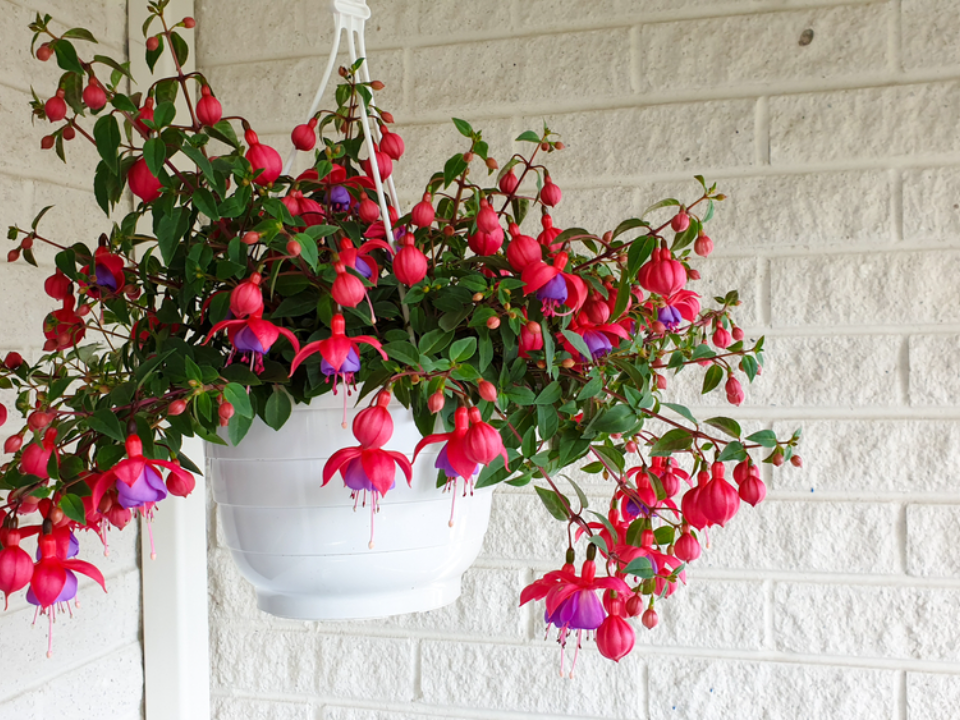
Fuchsia plants are known for their delicate, bell-shaped flowers that bloom in a range of colors, including purple, pink, red, and white. These plants are perfect for hanging baskets or containers, where their cascading flowers can be fully appreciated. Fuchsias can bloom all year round if they are given the proper care, making them a reliable choice for indoor gardens.
Fuchsias require bright, indirect light and should be kept in temperatures between 60°F and 75°F. They need to be watered regularly, keeping the soil consistently moist but not soggy. Fuchsias also benefit from occasional pruning to remove dead flowers and encourage new blooms. With proper care, these plants can provide year-round beauty with their graceful flowers.
Gardenia
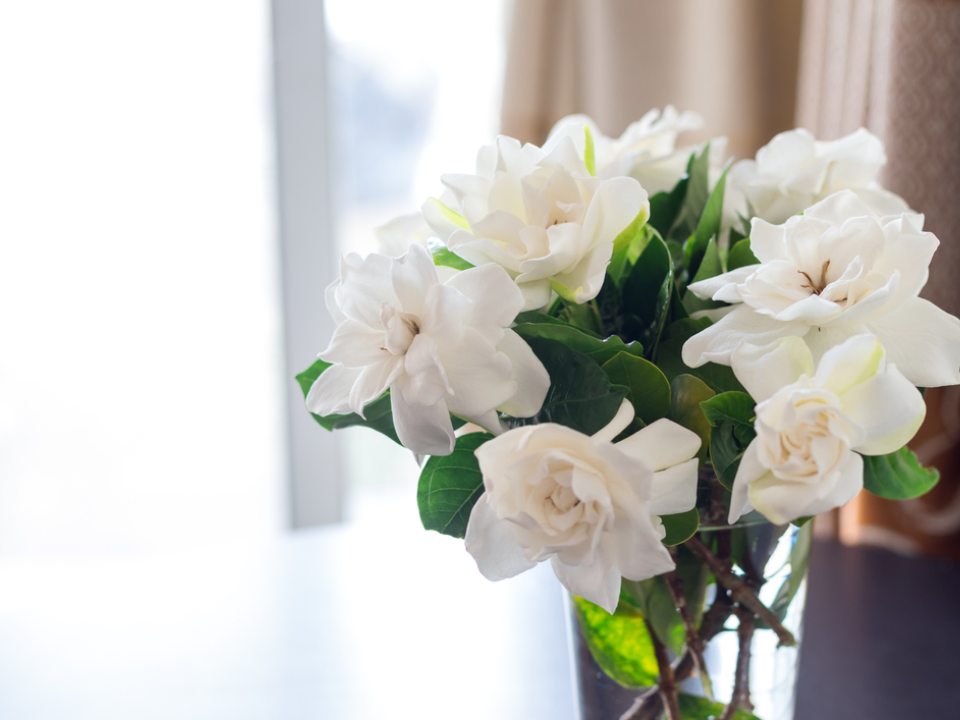
Gardenias are renowned for their fragrant, white blooms that can fill your home with a wonderful scent. These plants can flower year-round with the right care, offering a continuous display of elegance. Gardenias require a little more attention than some other indoor plants, but their beautiful, fragrant flowers make the effort worthwhile.
Gardenias prefer bright, indirect light and need to be kept in a humid environment. They thrive in temperatures between 65°F and 75°F and should be watered when the soil feels dry to the touch. Regular feeding with a balanced fertilizer will help promote blooming. With proper care, gardenias will reward you with beautiful flowers throughout the year.
Camellia
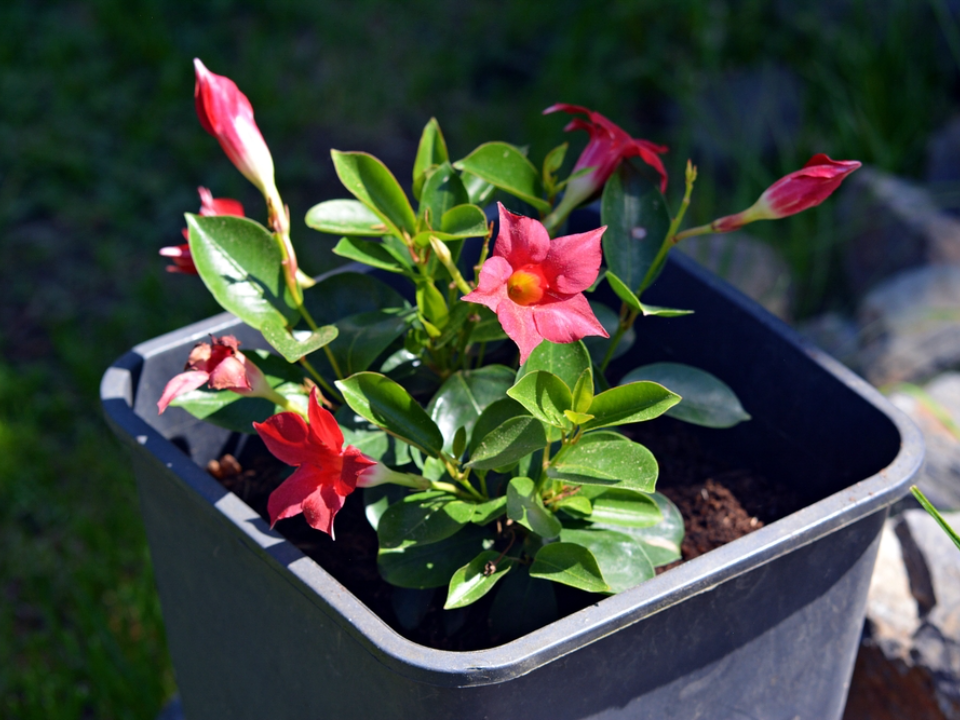
Camellias are evergreen shrubs that can bloom for extended periods, typically during the cooler months. Their large, showy flowers can range in color from white to deep red, providing a stunning contrast to their dark green foliage. Though traditionally grown outdoors, Camellias can also thrive indoors in containers, especially in cooler climates.
To keep Camellias blooming indoors, they need bright, indirect light and cool temperatures, ideally between 50°F and 65°F. They also require well-draining soil and should be watered regularly, ensuring the soil is kept evenly moist. Camellias are an excellent option for year-round indoor beauty, with their large flowers adding elegance to any room.
Lantana
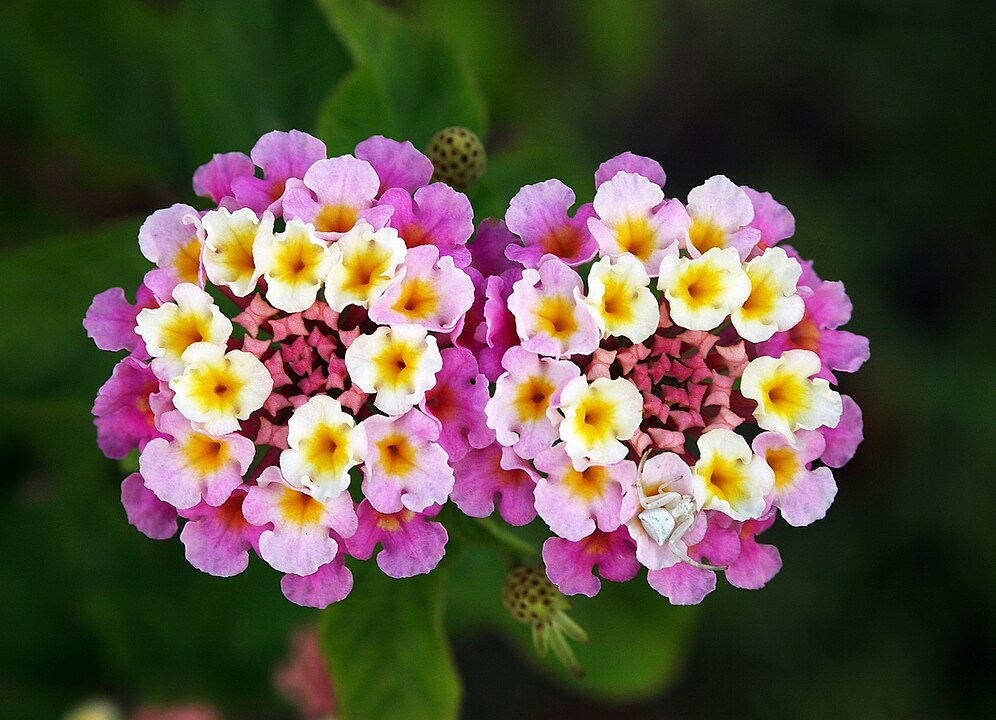
Lantanas are vibrant, hardy plants that can bloom continuously, producing clusters of small, colorful flowers in shades of red, orange, yellow, and purple. While they are often seen in outdoor gardens, they can also be grown indoors, especially in warm climates. Lantanas are easy to care for and will keep flowering as long as they are given the right conditions.
Lantanas thrive in bright, direct sunlight and prefer temperatures between 60°F and 85°F. They should be watered regularly, ensuring the soil is kept moist but not soggy. These plants are drought-tolerant and can withstand some neglect, making them a great choice for indoor gardeners looking for low-maintenance, year-round blooms.
Impatiens
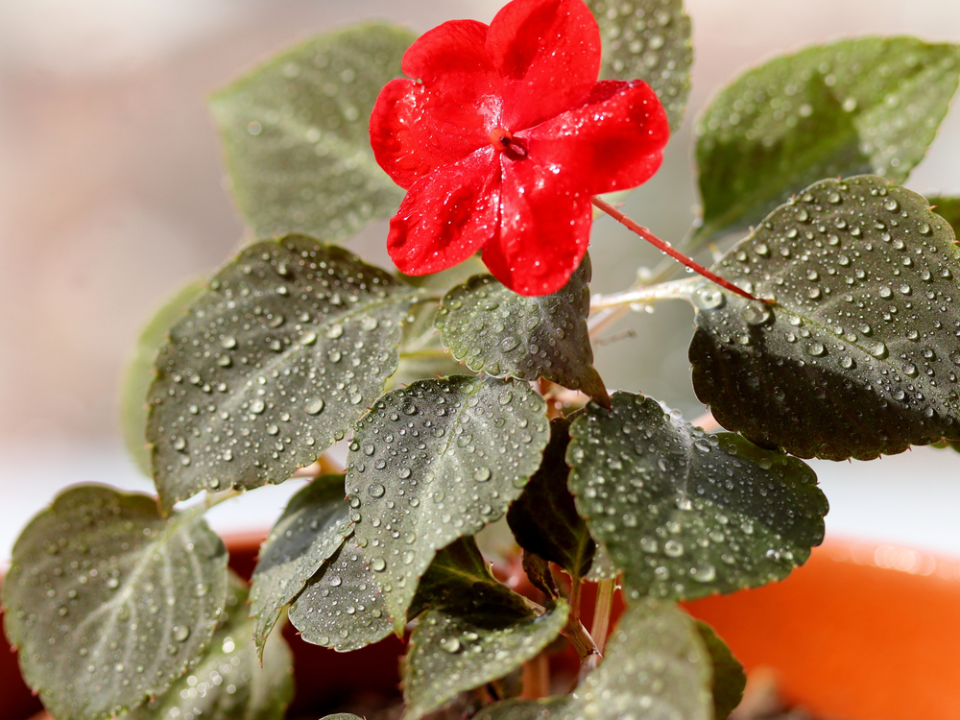
Impatiens are one of the most popular flowering plants for both indoor and outdoor gardens. Known for their colorful blooms in shades of pink, red, white, and purple, these plants can bloom continuously, brightening up any indoor space. Impatiens thrive in shaded areas, making them perfect for homes with less direct sunlight.
Impatiens prefer consistent moisture, so it is important to water them regularly, ensuring the soil stays evenly moist. They also enjoy humidity, so placing them in a humid environment or misting them occasionally will help them bloom. With the right care, impatiens can provide a steady stream of colorful flowers throughout the year.
Chrysanthemum
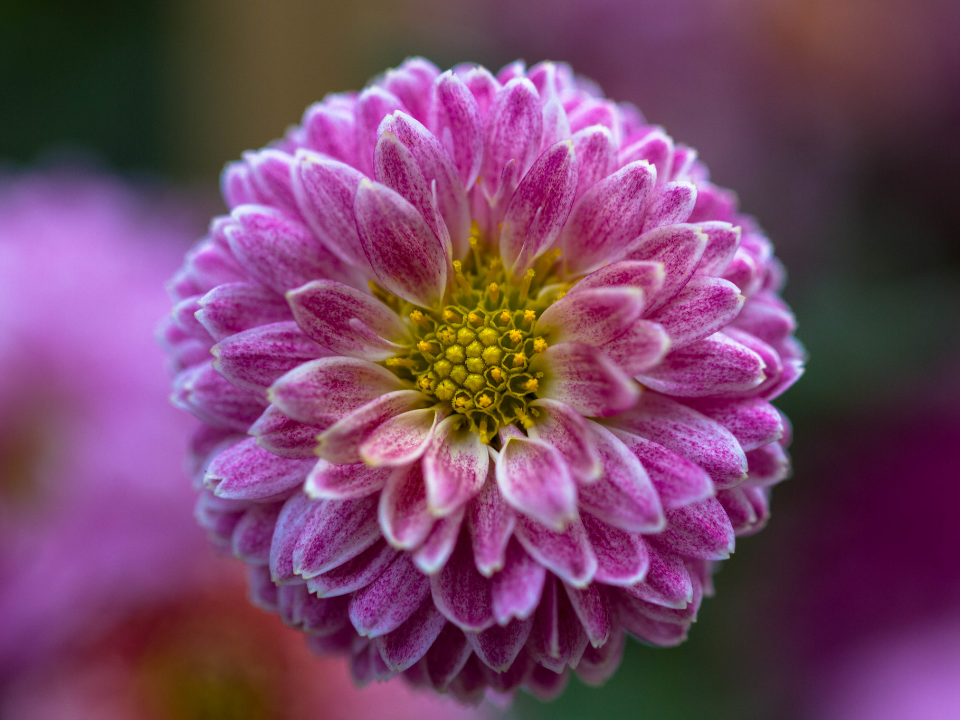
Chrysanthemums, often referred to as mums, are classic indoor flowering plants. Known for their vibrant blooms, they come in a variety of colors, including yellow, orange, red, and white. Mums are typically associated with fall, but with the right care, they can bloom year-round, making them a great addition to any indoor garden.
Mums require bright, indirect light and should be watered regularly, keeping the soil moist but not waterlogged. They thrive in temperatures between 60°F and 70°F and benefit from occasional pruning to remove dead blooms. With proper care, chrysanthemums will continue to bloom throughout the year, offering a constant supply of color and beauty.
Geranium
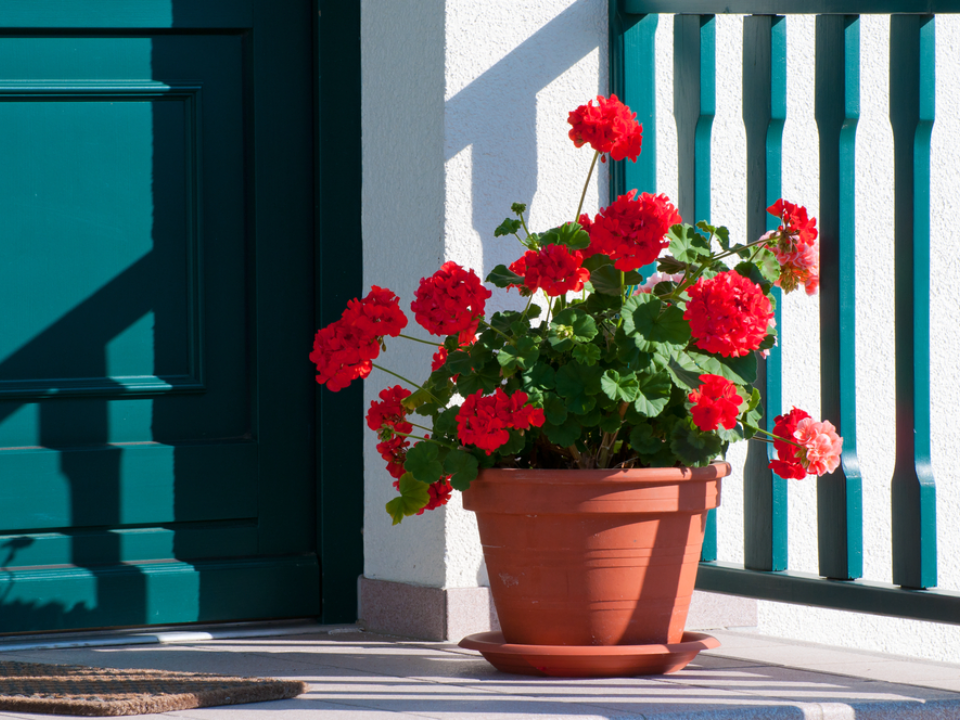
Geraniums are hardy, reliable plants that produce vibrant flowers in a variety of colors. They are commonly grown outdoors, but they also thrive indoors when provided with sufficient sunlight. Geraniums can bloom all year round if they are given the right care, making them an ideal choice for indoor gardening.
Geraniums require plenty of sunlight, ideally around 6 hours of direct light each day, and should be watered regularly when the soil feels dry. They prefer temperatures between 65°F and 75°F and benefit from occasional deadheading to encourage new blooms. With the right care, geraniums can provide a constant display of color throughout the year.
Lobelia
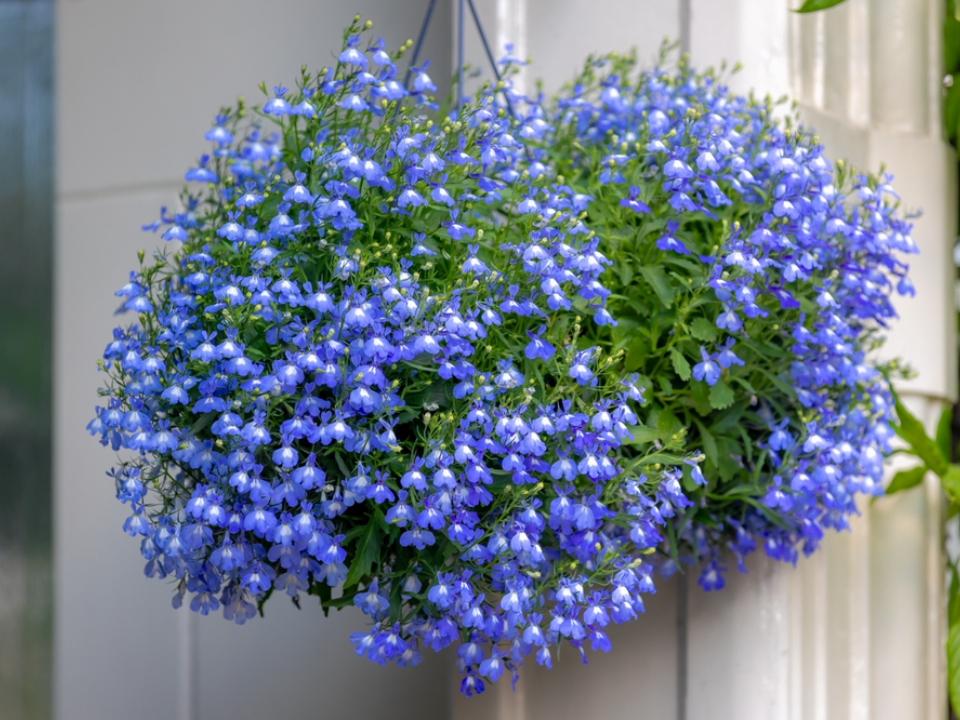
Lobelia is a trailing plant known for its vibrant blue, purple, and white flowers. These plants are perfect for hanging baskets or window boxes, where their cascading blooms can be fully appreciated. Lobelia is relatively low-maintenance and can flower continuously if given the right care.
Lobelia requires bright, indirect light and well-draining soil. They should be watered regularly, ensuring the soil remains moist but not waterlogged. These plants thrive in temperatures between 60°F and 70°F and benefit from occasional pruning to remove dead flowers and encourage new growth. With the right conditions, lobelia will provide beautiful flowers year-round.
This article originally appeared on Avocadu.
